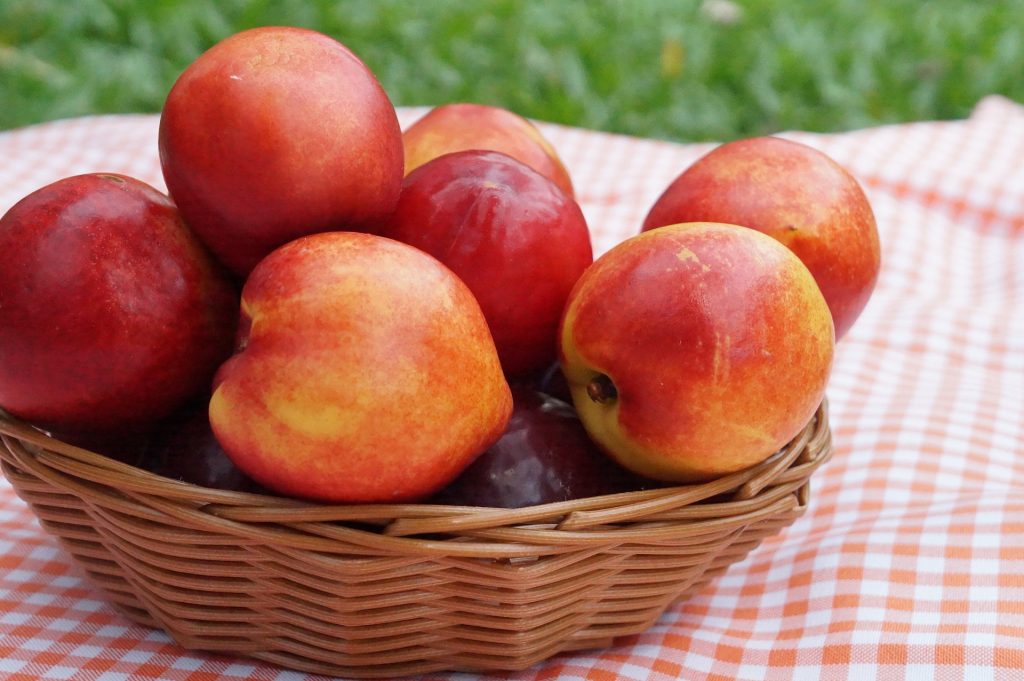Blog
Find articles that matter. From trading to shipping, trends to valuable goods, you can deep dive into everything you need.
Latest Posts
Blog
Dried fruits are a popular snack around the world, and Türkiye is a major producer and exporter of various types of dried fruits. Some of the most commonly produced dried fruits in Türkiye include apricots, figs, grapes, dates, and prunes.
Türkiye's geography, climate, and historical traditions make it well-suited for producing high-quality dried fruits. The country has a warm, dry climate that is ideal for growing many types of fruits, and many Turkish farmers have been cultivating and drying fruits for centuries.
In addition to its favorable growing conditions, Türkiye also has a well-developed infrastructure for processing and exporting dried fruits. The country has many modern facilities for washing, sorting, and packaging fruits, as well as efficient transportation networks that allow for quick and easy shipment to international markets.
Türkiye's dried fruit industry is an important part of the country's economy, generating billions of dollars in annual revenue and providing employment for thousands of people. Türkiye’s dried fruits are sold in markets around the world, with major export destinations including Europe, the Middle East, and North America.
Dried Fruit Production in Türkiye
Dried fruit has been a staple of Türkiye’s cuisine for centuries, and the country is now one of the largest producers and exporters of dried fruit in the world. From sweet and juicy figs to tart and tangy apricots, Türkiye’s dried fruit is a popular snack around the globe. Here's a closer look at the production of dried fruit in Türkiye:
Climate and Geography
The warm and dry climate of Türkiye is perfect for growing and drying fruit. The country's long summers and mild winters provide ideal conditions for fruit trees, and the diverse geography of the region means that many different varieties of fruit can be grown.
Types of Dried Fruit
Türkiye produces a wide range of dried fruit, including apricots, figs, grapes, dates, and prunes. Each of these fruits has a unique flavor profile and is used in a variety of culinary applications. For example, dried apricots are often used in desserts and pastries, while figs are commonly eaten as a snack.
Cultivation and Harvesting
Türkiye’s farmers use a variety of methods to cultivate and harvest fruit, depending on the specific fruit being grown. Many fruits are grown on small family farms and harvested by hand, while larger commercial farms use more advanced techniques such as mechanized harvesting.
Processing and Drying
Once the fruit has been harvested, it is washed and prepared for drying. The drying process can take place either in the sun or in special drying rooms equipped with fans and heaters. During the drying process, the fruit loses its moisture content, which preserves it and extends its shelf life.
Quality Control and Export
The Türkiye government closely regulates the production and export of dried fruit to ensure that it meets high-quality standards. Dried fruit is graded according to its size, color, and moisture content, and then packaged and shipped to markets around the world.
Türkiye’s Dried Fruits Export
Türkiye has long been a major player in the global dried fruit market, with a rich history of producing high-quality dried fruits for export. The country's favorable climate, skilled farmers, and modern processing techniques have enabled it to become one of the world's leading exporters of dried fruits. Türkiye ranks 2nd in the category of dried fruit products in the global export ranking. Increasing its dried fruit production every year, Türkiye seems to rise to first place among the leading names in the global market. Let's take a look at the situation of Türkiye, which also follows the innovations in the export sector.
Top Export Markets
Türkiye's dried fruit exports are highly valued around the world, and the country exports its products to dozens of different countries. Some of the top export markets for Türkiye’s dried fruits include the European Union, Russia, the United States, and the Middle East. These markets value Türkiye’s dried fruits for their high quality and unique flavor profiles.
Export Process
The export process for Türkiye’s dried fruits is highly regulated by the government to ensure that the products meet strict quality control standards. Once the dried fruit has been processed and packaged, it is shipped to markets around the world via a variety of transportation methods. The packaging of the dried fruit is carefully designed to protect the products during transportation and to keep them fresh and flavorful.
Industry Standards and Regulations
Türkiye’s government has implemented a number of industry standards and regulations to ensure the quality and safety of Türkiye’s dried fruit exports. This includes monitoring the use of pesticides and other chemicals in fruit production, as well as ensuring that dried fruits meet certain moisture and microbiological requirements.
Benefits of Türkiye’s Dried Fruit Export
The export of Türkiye’s dried fruits has numerous benefits for both Türkiye’s farmers and consumers around the world. Türkiye’s farmers benefit from increased demand and higher prices for their products, while consumers around the world have access to a diverse range of high-quality dried fruits that are both healthy and delicious.
Confidence in the Global Journey of Dried Fruit
Türkiye's dried fruit export industry is a major contributor to the country's economy and is highly valued by markets around the world. The country's favorable climate and skilled farmers, combined with modern processing techniques and strict quality control standards, enable Türkiye to produce high-quality dried fruits that are in demand globally. Whether you're a consumer looking for a healthy and delicious snack or a business looking to import high-quality dried fruits, Türkiye's dried fruit export industry has something to offer.
One of Türkiye's successful export companies, Turkish Goods sources high-quality dried fruits from reliable suppliers and delivers them to customers around the world. The company maintains its high standards for quality and reliability during its export activities.
In addition to its reputation for quality dried fruits, Turkish Goods plays a significant role in export activities. The company applies strict quality control procedures to meet the needs of its customers while also securing the necessary documentation and permits for export.
Turkish Goods takes all necessary measures to meet international export standards and delivers quality and reliable products to its customers, serving many customers worldwide.
International trade has been evolving rapidly in recent years, with new trends and challenges emerging all the time. As we move into 2023, it's important to keep up with the latest developments in the field, especially if you are involved in global commerce or planning to enter new markets. In this blog post, we'll explore some of the most important trends in international trade and their implications for businesses like Turkish Goods.
E-commerce is Driving Global Trade Growth
One of the biggest trends in international trade is the rapid growth of e-commerce, which is transforming the way businesses buy and sell goods across borders. According to recent data, global e-commerce sales are projected to reach $4.9 trillion by 2025, up from $3.5 trillion in 2019. This growth is being driven by factors such as rising consumer demand for online shopping, the increasing availability of internet access and mobile devices, and the expansion of digital payment systems.
For businesses like Turkish Goods, e-commerce presents both opportunities and challenges. On the one hand, it allows them to reach new customers and expand their market share without the need for costly physical infrastructure. On the other hand, it requires them to adapt to new digital technologies, such as online marketplaces and payment systems, and to compete with other businesses from around the world.
Sustainability is Becoming a Key Concern for International Trade
Another emerging trend in international trade is the growing importance of sustainability and social responsibility. As consumers and regulators become more aware of the environmental and social impacts of global commerce, there is increasing pressure on businesses to adopt sustainable practices and reduce their carbon footprint. This trend is reflected in the rise of initiatives such as the United Nations Sustainable Development Goals, which aim to promote sustainable economic growth and social progress around the world.
For Turkish Goods and other businesses, sustainability presents both challenges and opportunities. On the one hand, it requires them to invest in new technologies and practices that can reduce their environmental impact and improve their social performance. On the other hand, it can also create new market opportunities, as consumers and businesses seek out sustainable products and services.
The Rise of Protectionism and Trade Wars
A third trend that is affecting international trade is the rise of protectionism and trade wars. In recent years, there has been a growing backlash against globalization and free trade, as some countries seek to protect their domestic industries and jobs from foreign competition. This has led to the imposition of trade barriers, such as tariffs and quotas, which can make it harder for businesses like Turkish Goods to export their products and compete in foreign markets.
To navigate this trend, businesses need to stay informed about the latest trade policies and regulations and develop strategies that can help them mitigate the risks of protectionism and trade wars. This may involve diversifying their supply chains, investing in new markets, or partnering with local businesses to gain a foothold in foreign markets.
Digitalization is Transforming International Trade
Another important trend in international trade is the increasing digitalization of business processes, which is transforming the way companies buy and sell goods and services across borders. Digitalization involves the use of digital technologies, such as the Internet, cloud computing, and artificial intelligence, to streamline operations, reduce costs, and improve efficiency.
For businesses like Turkish Goods, digitalization presents many opportunities, such as the ability to reach new customers through online platforms and the use of data analytics to optimize supply chains. However, it also requires them to adapt to new technologies and develop new skills and capabilities, such as data analysis and cybersecurity.
The Importance of Data Privacy and Cybersecurity
As companies become more reliant on digital technologies to conduct business across borders, the importance of data privacy and cybersecurity is increasing. In recent years, there have been many high-profile data breaches and cyberattacks, which have resulted in the loss of sensitive data and damage to company reputations.
To mitigate the risks of data breaches and cyberattacks, businesses need to invest in cybersecurity measures, such as firewalls, encryption, and employee training. They also need to comply with data privacy regulations, such as the European Union's General Data Protection Regulation (GDPR), which requires companies to protect the personal data of EU citizens.
The Growing Importance of Emerging Markets
Finally, another trend in international trade is the growing importance of emerging markets, such as China, India, and Brazil. As these economies continue to grow and develop, they are becoming increasingly important as both sources of demand for goods and services and as suppliers of raw materials and manufactured goods.
For businesses like Turkish Goods, this trend presents both challenges and opportunities. On the one hand, it allows them to tap into new markets and expand their customer base. On the other hand, it requires them to adapt to new cultural, legal, and economic environments, and to compete with local businesses that may have an advantage in these markets.
In conclusion, international trade is a complex and dynamic field that is constantly evolving. By staying abreast of the latest trends and challenges, businesses like Turkish Goods can develop strategies that enable them to compete in the global marketplace and seize new opportunities. From e-commerce and sustainability to digitalization and cybersecurity, the trends discussed in this blog post will continue to shape international trade in the years to come.
Pasta, the quintessential Italian dish, has become a beloved staple in households all around the world. From spaghetti to fettuccine alfredo, pasta has found its way onto countless dinner plates and has been adapted into a variety of international cuisines. While Italy is known as the birthplace of pasta, did you know that Türkiye plays an important role in the global pasta industry? Türkiye has a rich history of pasta production and consumption and is now one of the largest pasta producers in the world.
Türkiye's long-standing relationship with pasta can be traced back centuries, with a variety of pasta dishes being enjoyed across the country. From hearty soups to savory casseroles, Türkiye’s cuisine has integrated pasta into many of its traditional dishes. While the pasta industry in Türkiye started to gain momentum in the early 20th century. It wasn't until the 1980s that its pasta production really took off.
Today, Türkiye is one of the world's top pasta producers, with its pasta exports reaching countries across the globe. The country's pasta industry has generated billions of dollars in revenue annually and continues to grow at a steady pace. Türkiye's high-quality pasta products have gained popularity in many countries, with the demand for its pasta increasing every year. With its rich history and commitment to producing healthy pasta options, Türkiye is well-positioned to remain a key player in the global pasta market for years to come.
Türkiye's Pasta Production
Türkiye's pasta production has been on the rise for several decades, with the country becoming one of the world's largest pasta producers. One of the factors that have contributed to the growth of Türkiye's pasta industry is the country's favorable geographical location. Türkiye is located at a crossroads between Europe, Asia, and the Middle East, which has made it a hub for international trade. This has enabled Türkiye's pasta manufacturers to easily export their products to countries all over the world. They include Europe, the Middle East, and North Africa.
Another important factor that has contributed to the growth of Türkiye's pasta industry is the country's abundant supply of high-quality durum wheat. It is the main ingredient used in pasta production. Durum wheat is a hard wheat variety that is high in protein and gluten, making it ideal for pasta making. Türkiye's durum wheat is renowned for its quality. It has become one of the country's most important agricultural exports.
The pasta production process in Türkiye is highly automated, with state-of-the-art machinery used to create high-quality pasta products. Türkiye’s pasta manufacturers use advanced technology and techniques to produce a wide range of pasta shapes and varieties. They include spaghetti, fettuccine, macaroni, and lasagna. In addition, many Turkish pasta manufacturers offer organic and whole-grain pasta options. They cater to consumers who are looking for healthier pasta alternatives.
Importance of Pasta in Türkiye's Export
Türkiye is one of the world's top pasta exporters, with its pasta products being sold in many countries across the globe. In fact, Türkiye is the third largest pasta exporter in the world, behind Italy and the United States. The country's pasta exports have been steadily increasing over the years, with demand for Türkiye’s pasta products growing in many international markets.
One of the key factors driving Türkiye's pasta exports is the high quality of its pasta products. Türkiye’s pasta manufacturers use advanced production techniques and state-of-the-art machinery to create pasta products that are both delicious and visually appealing. In addition, Türkiye’s pasta manufacturers are committed to using only the highest quality ingredients, such as durum wheat, to ensure that their pasta products meet the highest standards of quality.
Another factor that has contributed to the growth of Türkiye's pasta exports is the country's favorable trade agreements with many countries around the world. Türkiye has signed free trade agreements with several countries, including the European Union. This has enabled Türkiye’s pasta manufacturers to easily export their products to these markets. In addition, Türkiye has established strong trade relations with many countries in the Middle East and North Africa. They are important markets for Türkiye’s pasta exports.
In general, Türkiye's pasta export makes a significant contribution to the country's economy and generates billions of dollars in revenue annually. In 2022, 967 million 68 thousand dollars of pasta export was realized from Türkiye to 160 countries. With its high-quality pasta products, advanced production techniques, and appropriate trade agreements, Türkiye will continue to expand its pasta export and will become an even more important player in the world pasta market.
The Role of Turkish Goods in Pasta Export
Turkish Goods plays a significant role in the pasta export industry in Türkiye. As one of the leading companies in the country, we have established strong relationships with reliable pasta suppliers. We ensure that the quality of their products is consistently high.
By partnering with Turkish Goods, pasta suppliers gain access to international markets. This allows them to expand their business and increase their profits. At the same time, Turkish Goods is able to offer its clients a wide range of pasta products, including various shapes and sizes, made from high-quality ingredients. By leveraging their expertise in pasta production and export, Turkish Goods helps to promote Türkiye’s food culture on a global scale. It also contributes to the growth of Türkiye’s economy.
In addition to its strong presence in the pasta export industry, Turkish Goods also prides itself on its exceptional customer service. The company is known for its prompt and efficient communication, with a commitment to responding to customer inquiries within 48 hours. This dedication to customer satisfaction has helped Turkish Goods to build a loyal customer base and establish itself as a trusted brand in the international export market.
Furthermore, Turkish Goods offers its services in 13 different languages, making it easier for customers from all over the world to communicate with the company. This multilingual approach reflects the company's commitment to promoting diversity and inclusivity and has been key to its success in building relationships with customers from different cultures and backgrounds. As a result, it is a reliable partner all over the world in the export of pasta, like many other products.
Nuts have been a staple food in human diets for centuries. Since they are a great source of essential nutrients, healthy fats, and protein, they are an indispensable part of a balanced diet. Nuts are also versatile in the way that they can be used. They are used in a wide range of culinary dishes and snacks, not only adding flavor but also improving their nutritional value.
Türkiye is home to a variety of nuts. Nuts are widely consumed in the country both in dishes and as a snack, especially in the company of Turkish tea. Due to their high quality, some of these nuts are highly sought after and popular worldwide. In this blog post, we will explore the top five nuts you can import from Türkiye, as well as their uses and health benefits.
Hazelnuts
Hazelnuts are one of the most popular nuts grown in Türkiye. The country is responsible for producing around 70% of the world's hazelnuts. The majority of Turkish hazelnuts are cultivated in the Black Sea region, where the climate and soil are ideal for their growth.
Hazelnuts have been grown in Türkiye for centuries, and they have a rich history in the country's cuisine.
Hazelnuts are used in various culinary creations, including sweet and savory dishes. In Turkish cuisine, hazelnuts are commonly used in desserts like baklava, which is a popular pastry made with layers of filo dough, honey syrup, and chopped nuts. Hazelnuts are also used as a topping for desserts like ice cream.
Hazelnut butter, also known as tahini, is another popular ingredient used in Turkish cuisine. Tahini is used in many sauces and dips, including hummus, baba ganoush, and muhammara. It can also be used as a spread, similar to peanut butter.
Aside from their culinary uses, hazelnuts are also a significant part of Türkiye's economy. The hazelnut industry provides employment to many Turkish citizens and is a significant export for the country. Hazelnuts are exported all over the world and are used in a variety of products, including chocolate, spreads, and coffee.
Pistachios
Pistachios have a special place in Türkiye and the country is especially famous for its own type of pistachios called Antep pistachios. They are primarily grown in the Southeastern region of the country, where the dry and arid climate is
Turkish pistachios are known for their unique taste, vibrant green color, and firm yet tender texture. Especially Antep pistachio is famous for its quality and unique flavor. They are a popular snack in Türkiye and are often eaten roasted and salted or incorporated into dishes like baklava and Turkish delight, taking their flavor to the next level.
It’s not a surprise that pistachios are widely consumed. Pistachios also have several health benefits, making them a nutritious snack option. They are a rich source of protein, healthy fats, and fiber, and contain vitamins and minerals such as vitamin B6, thiamine, and potassium. Regular consumption of pistachios has been linked to a lower risk of heart disease and improved digestive health.
Walnuts
Walnuts are another nut that is widely grown in Türkiye. The majority of Turkish walnuts are grown in the Aegean and Marmara regions, where the climate and soil are ideal for their cultivation. Walnuts are offered in various ways depending on their use.
Turkish walnuts have a slightly bitter taste and are used in various dishes in Türkiye. They are used in many desserts, including baklava and Turkish delight. Walnuts are also used as a topping for yogurt-based dishes and incorporated into savory dishes like stuffed eggplant, adding a different touch to these delicious treats.
The wide use of walnuts is not only because of their taste or high quality but because they are also highly nutritious. They are an excellent source of healthy fats, protein, and fiber. Walnuts are also a good source of vitamins and minerals, including vitamin E, magnesium, and potassium.
Almonds
Widely used in various forms in Turkey, almonds are also one of the nut varieties cultivated in Türkiye. They are primarily grown in the Eastern region of the country since the climate and soil condition are perfectly balanced for their growth in these regions.
Turkish almonds have a mild and sweet taste and are often used in baking and confectionery. They are used in a variety of desserts, including Turkish delight and halva. Almonds are also used as a topping for salads and yogurt-based dishes.
In addition to their culinary uses, almonds have several health benefits. They are an excellent source of protein, healthy fats, and fiber, making them a healthy snack option. Almonds are also a good source of vitamin E, magnesium, and other nutrients that are beneficial for overall health.
Chestnuts
Chestnuts are the favorite of many in Türkiye, especially in winter months. They are primarily grown in the Black Sea region, where the climate and soil are ideal for their growth. Turkish chestnuts are known for their large size and sweet and nutty flavor.
Chestnuts are versatile nuts used in many dishes, both sweet and savory. They are often roasted and eaten as a snack or used as a topping for salads. Chestnuts are also used in many desserts, including a Turkish chestnut dessert called "Kestane Şekeri."
In addition to their culinary uses, chestnuts have several health benefits. They are low in fat and calories and are an excellent source of fiber, making them a healthy snack option. Chestnuts are also a good source of vitamins and minerals, including vitamins C, B6, and potassium.
Turkish Goods: Your Source for High-Quality Nuts from Türkiye
Türkiye is home to a variety of nuts that are not only delicious but also highly nutritious as they are consumed on a regular basis and loved by the locals. Hazelnuts, pistachios, walnuts, almonds, and chestnuts are some of the most popular nuts in the country and are in high demand worldwide.
By working with Turkish Goods, you can ensure that you receive high-quality nuts that are perfect for your needs. So, why not try importing some Turkish nuts today and offer the best experience to your clients? Contact us now to receive a quotation only in 48 hours.
The Grain Corridor is a geographic region that encompasses countries such as Russia, Ukraine, Kazakhstan, Türkiye, and Egypt. This region is important for global food security, as it is a significant supplier of wheat, corn, and other grains to countries all around the world.
Türkiye is a vital player in the global grain trade, thanks to its strategic location in the Grain Corridor, which acts as a bridge between Europe and Asia. In this blog post, we will delve into Türkiye's role in the Grain Corridor, including its grain production, role in the grain trade, infrastructure and logistics, and future outlook.
Türkiye's Grain Production
Türkiye has a diverse agricultural sector that ranges from grains to fruits and vegetables. However, in terms of grain production, Türkiye is a significant producer of wheat, corn, and barley. According to the Ministry of Agriculture and Forestry, in the 2020/2021 period, Türkiye produced 20.5 million tons of wheat. Russia imports the most wheat from Türkiye.
Most of the wheat produced in Türkiye grows in Konya, Şanlıurfa and Diyarbakır provinces. Türkiye is largely self-sufficient in terms of grain production, with a surplus that allows for exports. In the 2019/2020 period, Türkiye’s self-sufficiency was %89.
Türkiye's Role in the Grain Trade
Türkiye plays a crucial role in the global grain trade as a transit country. Its strategic location in the Grain Corridor makes it a bridge between Europe and Asia, providing a gateway for grain shipments to and from the region. Türkiye's major export markets for grain include Iraq, Egypt, and Saudi Arabia.
Despite its importance, Türkiye faces challenges in the grain trade, including competition from other major grain-producing countries such as Russia and Ukraine. These countries have lower production costs, giving them a competitive advantage in the global grain trade. However, Turkey's location and infrastructure provide it with a unique advantage in the grain trade, making it a valuable player in the industry.
Infrastructure and Logistics
Turkey's transportation infrastructure is extensive, including a network of roads, railways, and airports, as well as several major ports on the Mediterranean and Black Seas. The Port of Izmir, located on the Aegean Sea, is one of Turkey's busiest ports and a major hub for grain exports. The Port of Mersin, on the Mediterranean Sea, is another essential port for grain exports.
Despite having a solid transportation network, Turkey faces challenges in transporting grain from inland areas to ports for export. Its railway network, in particular, is in need of modernization and expansion. Improving transportation infrastructure and logistics could help Turkey become a more competitive player in the global grain trade.
Future Outlook
Turkey has the potential to increase its grain production and expand its role in the global grain trade. The Turkish government has identified agriculture as a key sector for economic growth and has implemented policies to support farmers and increase productivity. Turkey's favorable climate and geographical location also provide opportunities for expanding its agricultural production, particularly in the eastern and southeastern regions of the country.
To take advantage of these opportunities, Turkey will need to invest in infrastructure and logistics to improve transportation and export capabilities. This includes modernizing its railway network, upgrading port facilities, and investing in storage and processing facilities for grains. In addition, Turkey could explore new export markets for its grains, particularly in Africa and the Middle East, where demand for food is expected to increase in the coming years. The Turkish government has already taken steps to increase trade with African countries, signing several trade agreements in recent years.
Turkey's Importance in the Grain Corridor
Turkey plays a critical role in the Grain Corridor, serving as a transit country for grain shipments between Europe and Asia and exporting significant quantities of wheat, corn, and barley. Turkey's agricultural sector is diverse and has the potential for growth, while its infrastructure and logistics present both challenges and opportunities for expansion.
As the global demand for food continues to grow, Turkey's strategic location and potential for increased agricultural production make it a key player in the global grain trade. By investing in infrastructure and logistics, developing new export markets, and supporting its agricultural sector, Turkey can further enhance its role in the Grain Corridor and contribute to global food security.
In addition to economic benefits, investing in Turkey's agricultural sector could also have social and environmental benefits. Increasing agricultural production could provide employment opportunities for rural communities, helping to reduce poverty in these areas. Additionally, sustainable agriculture practices could be implemented to promote environmental sustainability and reduce the sector's impact on climate change.
Overall, Turkey's strategic location in the Grain Corridor, coupled with its diverse agricultural sector and growing economy, make it an important player in the global grain trade. While Turkey faces challenges in the grain trade, it also has opportunities to expand its role by investing in infrastructure, developing new export markets, and increasing agricultural production.
In conclusion, Turkey's role in the Grain Corridor is critical to global food security, with its strategic location and agricultural potential making it an important player in the global grain trade. By investing in infrastructure and logistics, exploring new export markets, and supporting sustainable agriculture practices, Turkey can further enhance its role in the Grain Corridor and contribute to global food security and economic growth.
There is nothing more freshening than eating melons on hot summer days. Among human beings, melons are a beloved fruit because of their refreshing sweetness and versatility in various culinary applications. Melons can be enjoyed in many different ways. They can be eaten on their own, or they can be added to salads, smoothies, and desserts. They are often used to make refreshing drinks.
Not just their sweetness and their culinary usage, melons also have countless health benefits. Melons are high in critical vitamins and minerals that are necessary for optimum health. They are composed of about %90 of water and that makes them an excellent choice for staying hydrated. They are also known for their anti-inflammatory properties with their high levels of antioxidants.
With being one of the most popular fruits in the world, it is no surprise that melon is also one of the top exports. The juicy and refreshing fruit has been growing in popularity over the years, with countries like Türkiye leading the way in terms of production and export. Melon exports contribute significantly to the world economy, with many countries relying on them as their primary source of revenue.
In this article, we will be looking at some of the top melon exporters around the world, their production methods, and how they have been able to become successful in this industry.
The United States
The USA is a major player in the global melon export market. They are one of the top exporters in the market and also the most importing country in melon exports. In the United States, melons are primarily grown in California, Arizona, and Texas. The country produces a variety of melons, and export to countries such as Canada, Japan, and Mexico. The country's melons are known for their high quality and sweetness.
According to the data, the United States exported $216 million in melons and imported $788 million in melons, making it the world's fifth-largest exporter and first-largest importer. In December 2022, the USA's exports contributed up to $15.7 million, while imports accounted for up to $78.5 million, resulting in a negative trade balance of $62.7 million.
Türkiye
Türkiye is a major producer and exporter of many fruits and vegetables, and melons are among the most important agricultural products grown in the country. Melons have been grown in Turkey for generations, and production and exports have been steadily expanding year after year. Melons are grown in many regions across Türkiye, with the Mediterranean and Aegean regions being the most significant producers.
Melon production in Türkiye is primarily centered in the provinces of Adana, Antalya, Mersin, and Muğla. These areas have a suitable environment and perfect growing conditions for melon cultivation. Furthermore, the country's sophisticated agricultural technology and production practices contribute to the high quality and quantity of melons produced.
Türkiye is one of the world's largest melon exporters with its primary customers being Germany, Romania, Poland, Russia, and Bulgaria based on the latest data. Other significant markets for Türkiye's melon production are the Middle East, France, the Netherlands, and the United Kingdom. In recent years, Turkish melon exports have been increasing, with a total export value of $30M in 2020.
Spain
Spain is the world's top exporter according to the latest data. The country's warm climate, combined with advanced irrigation techniques, enables them to produce high-quality melons that are in demand globally. Those advanced agricultural practices made Spain a top producer of melons.
Melon production in Spain is centered in the southern region of Andalusia, which has the ideal climate for growing melons. The majority of Spain's melon exports go to European Union countries. In 2020, Spain exported $889M in melons, making it the world's first largest exporter of melons. Melons were Spain's 66th most exported product in the same year. Spain's biggest export destinations for melons were Germany with $276M, France with $199M, the United Kingdom with $80.5M, the Netherlands with $67.1M, and Portugal with $47.1M.
Spain's melon production and exports continue to be strong, thanks to its favorable climate, advanced agricultural practices, and high-quality produce. The country's commitment to sustainability and organic farming practices is also helping to ensure that Spain remains a top producer and exporter of melons in the future.
Mexico
Melon production is the country's one of the most important parts of Mexico's agricultural industry, with the country being a major producer and exporter of this fruit. Mexico's melon production is primarily concentrated in the western states of Sinaloa, Sonora, and Nayarit. These regions have the ideal climate and soil conditions for growing melons.
Mexico is a huge exporter of Melons. In the latest data, Mexico shipped $491 million in melons, making it the world's second-largest exporter of melons. Melons were Mexico's 124th most exported product in the same year. Mexico's biggest export destinations for melons were the United States, Canada, Japan, Hong Kong, and Germany.
The high quality of Mexican Melons is due to the use of advanced agricultural practices, such as drip irrigation. Mexican farmers also use modern equipment and machinery, as well as the latest technology, to ensure that their crops are of the highest quality.
Brazil
Melon is one of the most important crops in Brazil. The country is one of the largest producers and exporters in the world. The main states for melon production in Brazil are Rio Grande do Norte, Ceará, Bahia, and Pernambuco, which are located in the Northeast region of the country.
Moreover, melon production in Brazil has been steadily increasing over the years. Based on the latest data, Brazil exported $264M in melons, making it the world's third-largest exporter of melons. Melons were the 85th most exported product in Brazil in the same year. Brazil's largest export destinations for melons were the Netherlands, the United Kingdom, Spain, Portugal, and Germany.
In addition to its export market, the domestic market for melon in Brazil is also significant, with the fruit being consumed widely throughout the country. The high demand for melon in Brazil has led to the development of various value-added products, such as melon juice and jam, which are highly popular.















